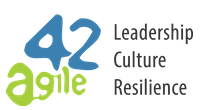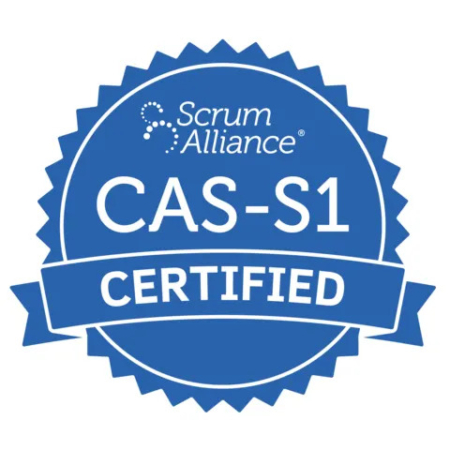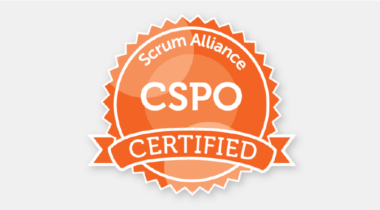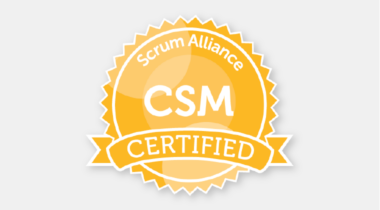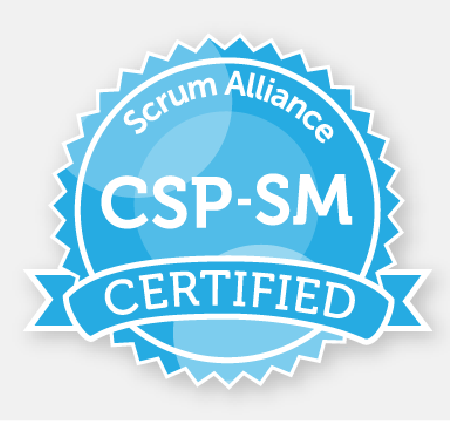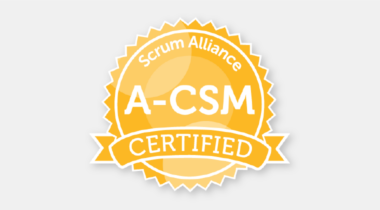
Duration: 16h
Delivery: Remote / Face-to-face
Certifications: CAS-S1 Certification (Scrum Alliance)
CAS-S1 is Scrum Alliance’s new Agile at scale certification. During the two-day scaling course, you will learn different approaches that need to be taken when working with multiple teams. Unlike prescriptive scaling frameworks, the course will equip you with the skills and knowledge to identify principle-informed patterns that apply to your organization’s unique and evolving context.
The class is presented in a highly interactive and collaborative format with elements of lecture, classroom discussion, exercises, games and simulations, smoothly blended throughout the class. We will approach the class at a sustainable pace and endeavor to take breaks often, to allow our brain to stay focused and our body to recharge when necessary. Upon completion, students will receive a CAS-S1 Scaling certification.
Overview of this Agile at scale training
In CAS-S1 you will learn different approaches that need to be taken when working agile with multiple teams. Unlike prescriptive scaling frameworks, the course will equip you with the skills and knowledge to identify principle-informed patterns that apply to your organization’s unique and evolving context.
The class is presented in a highly interactive and collaborative format with elements of lecture, classroom discussion, exercises, games and simulations, smoothly blended throughout the class. We will approach the class at a sustainable pace and endeavor to take breaks often, to allow our brain to stay focused and our body to recharge when necessary.
Upon completion of the class, students will receive a CAS-S1 Scaling certification.
Who should attend CAS-Scaling 1?
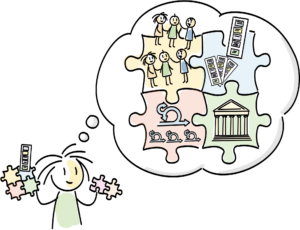 This course is ideal for change agents—managers, executives, coaches, and anyone participating in scaling within an organization who needs adaptable guidance and a tailored approach to the core aspects of scaling.
This course is ideal for change agents—managers, executives, coaches, and anyone participating in scaling within an organization who needs adaptable guidance and a tailored approach to the core aspects of scaling.
The CAS-S1 course is right for:
- Managers guiding the change
- Executives who believe in the change
- Agilists who embody the change
You can supercharge your skills even if you’re in the middle of an evolving scaling transformation or have never attempted scaling. This course is designed to meet you and your organization wherever you are in your journey to expand the benefits of agile teams.
Training topics
- What is Scaling and Why is it Necessary?
- Approaches to Scaling (Principles-led, Practice-led, Pattern-led)
- Principles of Organic Scaling
- Introduction to Complexity and System Thinking
- Value Delivery and Unnecessary Synchronizations
- Organizational Culture and Decentralized Control
- Scaling Patterns
- Change Management in Scaling
- The Role of Agile Coaches in Scaling
- Scaling Case Study Deconstruction
Included in the training
- Certificate for Certified Agile Skills – Scaling (CAS-S1) + two-year membership to the Scrum Alliance
- Slack channel to continue collaborating with your classmates after the class and access trainers to ask questions
- Option to join the agile42 Community and get access to a number of free learning resources, like books, articles and videos
- Life-long warranty on the course: e-mail access to the trainers
Upcoming CAS-S1 training
Why train with agile42?
- Experience: Over the years, agile42 has delivered Scrum & Agile training to thousands of professionals worldwide. Our instructors have decades of experience using and coaching Scrum in hundreds of organizations large and small.
- Excellent ratings: We consistently receive excellent ratings from our participants.
- Techniques: In all of our classes, we use techniques from Accelerated Learning and in particular principles and concepts from Training from the Back of the Room.
- Engaging: Our courses are highly interactive and fun – not a PowerPoint assault, and our participants stay engaged throughout the class, learn by doing, and have fun along the way. When learners talk and teach, they learn. – Sharon Bowman
- Practical and Memorable: Participants learn through hands-on exercises, creating high knowledge retention.
- Sustainable: We are contributing to a greener planet by decreasing our carbon footprint by not having people travel to the venue, and less paper usage in terms of flipcharts and post-it notes.
